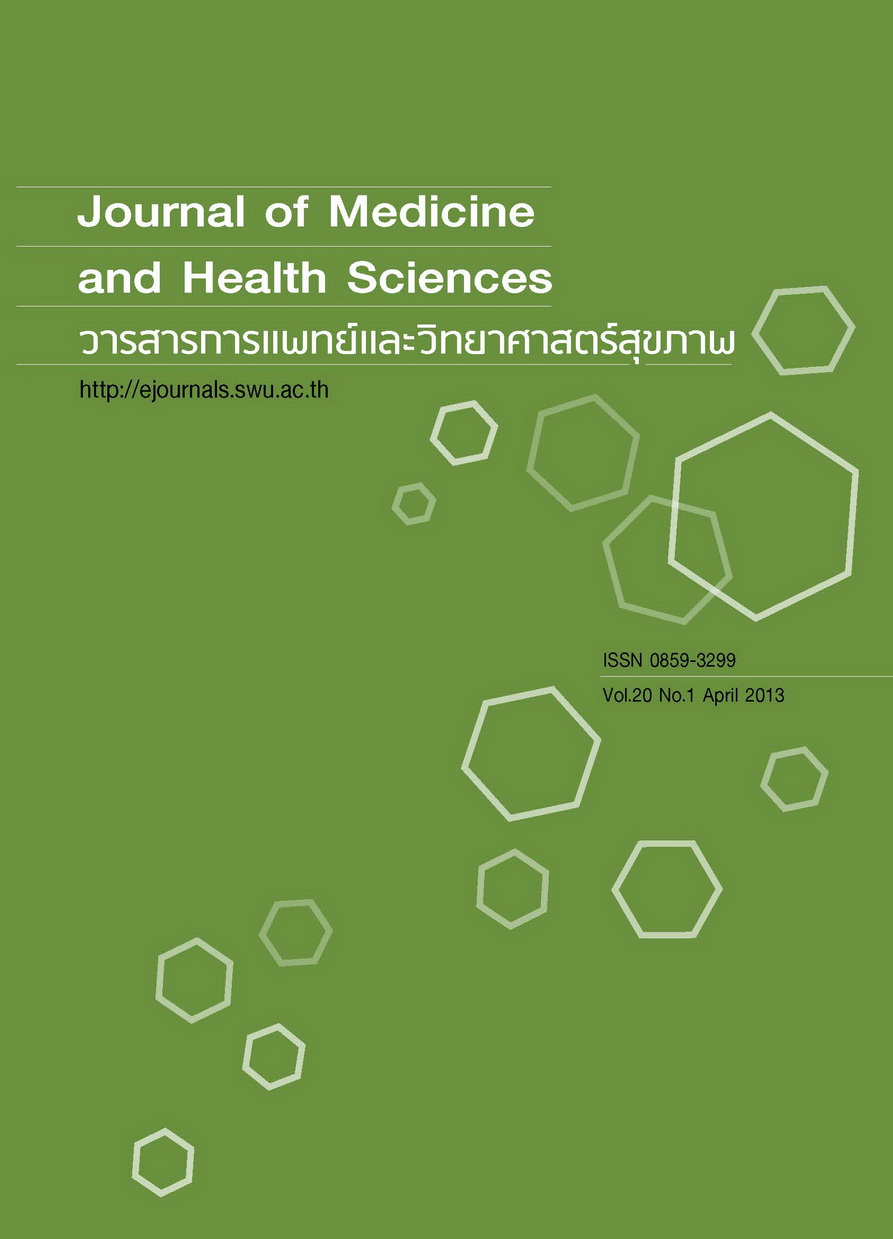Loop-mediated Isothermal Amplification (LAMP) technique for the detection of Mycobacterium tuberculosis complex
Keywords:
วัณโรค, การวัดความขุ่น, การวัดสีเปลี่ยนแปลง, Tuberculosis, Turbidimetry, ColorimetryAbstract
Tuberculosis is an airborne disease caused by Mycobacterium tuberculosis and is a public health problem of this country, ranking as the second leading cause of death from worldwide infectious diseases. The laboratory diagnosis takes about 1-2 months by culture as the gold standard method, which may affect the treatment of patients. Polymerase Chain Reaction (PCR) is another method, used for the detection of M. tuberculosis, but this amplification process requires 3-4 hours, high precision and expensive tools. However, the development of a rapid and timely diagnosis is essential for treatment planning, control and preventing the spread of this disease. Recently, a Loop-mediated isothermal amplification (LAMP) technique has been developed which can amplify DNA to 109 in less than 1 hour under a constant temperature. This technique uses 4 or 6 primers recognizing 6 distinct regions of the target DNA template, which is a high specific detection. In the LAMP reaction, the pyrophosphate ion, which was released during DNA synthesis, binds with the magnesium ion as a white precipitate of magnesium pyrophosphate formation. It can be seen with the naked eye, confirmed with spectrophotometry, or fluorescent compound. This technique is a molecular biology technique that has been successfully implemented in the detection of M. tuberculosis in clinical specimens. This technique has several advantages, such as rapidity, high sensitivity, and ease of application. Therefore, this technique is expected to be widely used. This report will describe the LAMP technique and all of the available information on its implementation in the detection of M. tuberculosis in clinical specimens.
เทคนิค Loop-mediated Isothermal Amplification (LAMP) สำหรับตรวจเชื้อวัณโรค
วัณโรคเป็นโรคติดต่อทางอากาศ ที่เกิดจากการติดเชื้อแบคทีเรีย Mycobacterium tuberculosis ซึ่งเป็นปัญหา ทางสาธารณสุขของไทยและเป็นสาเหตุการตายอันดับที่สองของการเสียชีวิตจากโรคติดเชื้อทั่วโลก การวินิจฉัยการติดเชื้อ ชนิดนี้ในห้องปฏิบัติการใช้เวลาประมาณ 1-2 เดือนด้วยวิธีการเพาะเชื้อเป็นวิธีหลักในการตรวจ ซึ่งอาจส่งผลต่อการติดตาม รักษาของผู้ป่วยได้สำหรับตรวจด้วยวิธีPolymerase Chain Reaction (PCR) เป็นอีกวิธีการหนึ่งที่นำมาใช้ในการตรวจหา เชื้อวัณโรค ใช้เวลาในการตรวจนานประมาณ 3-4 ชั่วโมงแต่ต้องใช้เครื่องมือเฉพาะที่มีความแม่นยำสูงและมีราคาแพง อย่างไรก็ตามการพัฒนาการวินิจฉัยที่รวดเร็วและทันท่วงทีจึงเป็นสิ่งจำเป็นสำหรับการวางแผนรักษา ควบคุมและป้องกันการ แพร่ระบาดของโรคนี้เมื่อเร็วๆ นี้มีการพัฒนาเทคนิค Loop-mediated isothermal amplification (LAMP) เป็นวิธีการ เพิ่มปริมาณสารพันธุกรรมของสิ่งมีชีวิตได้ถึง 109 เท่า ภายใต้อุณหภูมิคงที่ ในระยะเวลาน้อยกว่า 1 ชั่วโมง วิธีดังกล่าวนี้ใช้ primers 4 ชุดหรือ 6 ชุด ที่จำเพาะต่อกับสาย DNA ต้นแบบ 6 ตำแหน่ง จึงทำให้มีความจำเพาะต่อการตรวจสูง การติดตาม ปฏิกิริยา LAMP ที่เกิดจากการสังเคราะห์เกิดจากการจับกันของ pyrophosphate ion กับ magnesium ion ได้ สารประกอบเซิงซ้อน magnesium pyrophosphate ทำให้เกิดตะกอนสีขาวขุ่นไม่ละลายน้ำ ซึ่ง pyrophosphate เป็นสาร ที่ปล่อยออกมาระหว่างการสังเคราะห์สารพันธุกรรม ตะกอนดังกล่าวสามารถมองเห็นได้ด้วยตาเปล่า หรือการยืนยันผลการ ตรวจเชื้อด้วยเครื่อง spectrophotometry แม้กระทั่งการติดตามด้วยสารฟลูออเรสเซนต์ได้ซึ่งเป็นเทคนิคทางอณู ชีวโมเลกุลที่ประสบความสำเร็จในการตรวจเชื้อวัณโรคในสิ่งส่งตรวจ เทคนิคนี้มีข้อได้เปรียบหลายประการ เช่น มีความไว และความจำเพาะสูง แม่นยำและง่ายต่อการใช้งาน วิธีดังกล่าวจึงสามารถนำไปใช้ในการตรวจเชื้อที่ก่อให้เกิดวัณโรค ดังนั้น บทความนี้จะนำเสนอถึงเทคนิคและข้อมูลในการตรวจเชื้อดังกล่าวในสิ่งส่งตรวจ



